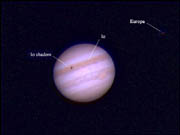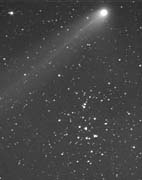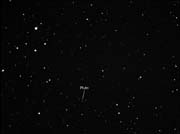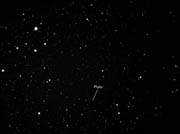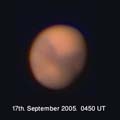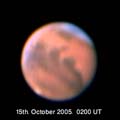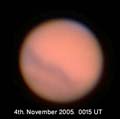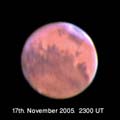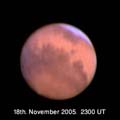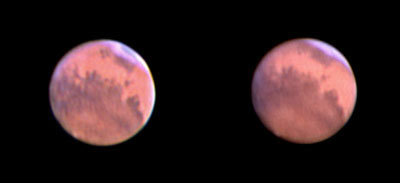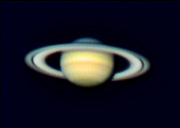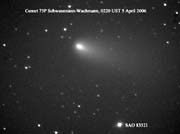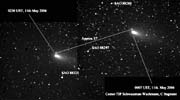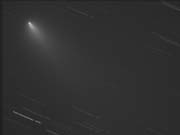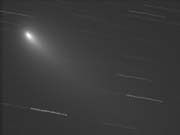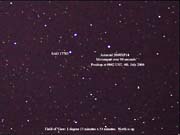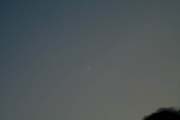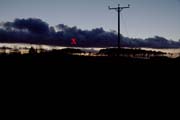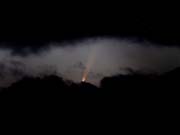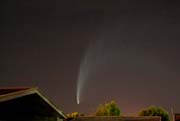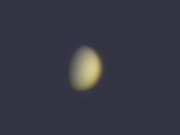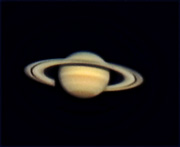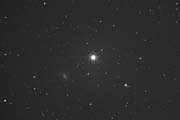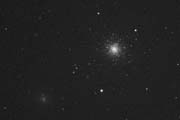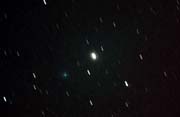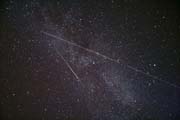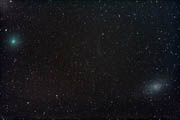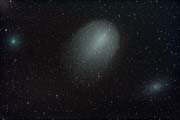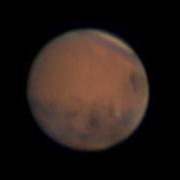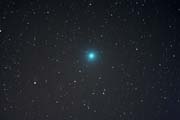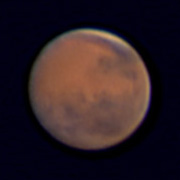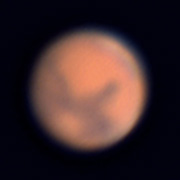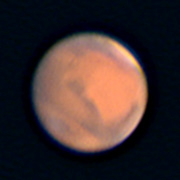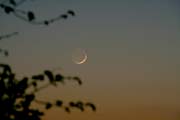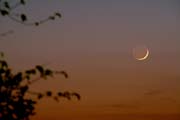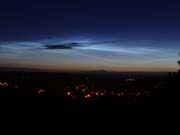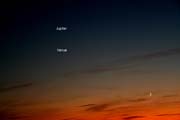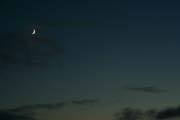3-D Jupiter!
At last I've moved to my new home in Northumberland, with open dark skies over farmland and woodland to the South, and moderate light pollution to the North, looking over the town of Hexham from 450 feet above it! This Southerly view was taken the morning after the snowfall of 28th. January 2004. South is about 1/3 from the left.
The night of 25th. January 2004 was still, with patchy mist, but good seeing, so I finally unpacked my LX90 and started imaging around 0200 UST.
I'm particularly pleased with the right hand image of Jupiter - I haven't had such good definition on a planet for about three years now, and I believe this is not only due to the favourable weather conditions, but also the fact that I am no longer viewing across Supermarket and Multiplex Cinema buildings and car parks, a trunk road and a 24 hour car factory (Nissan) only two miles away, with all the attendant thermal activity!
These images were taken 6 minutes apart, and the rotation is just enough to give a 3-D effect using the 'crossed eye' technique. Click on the thumbnail for a full size image, and here for one sized to give relatively easy stereo viewing on average monitor settings. You may need to resize for the best effect.


